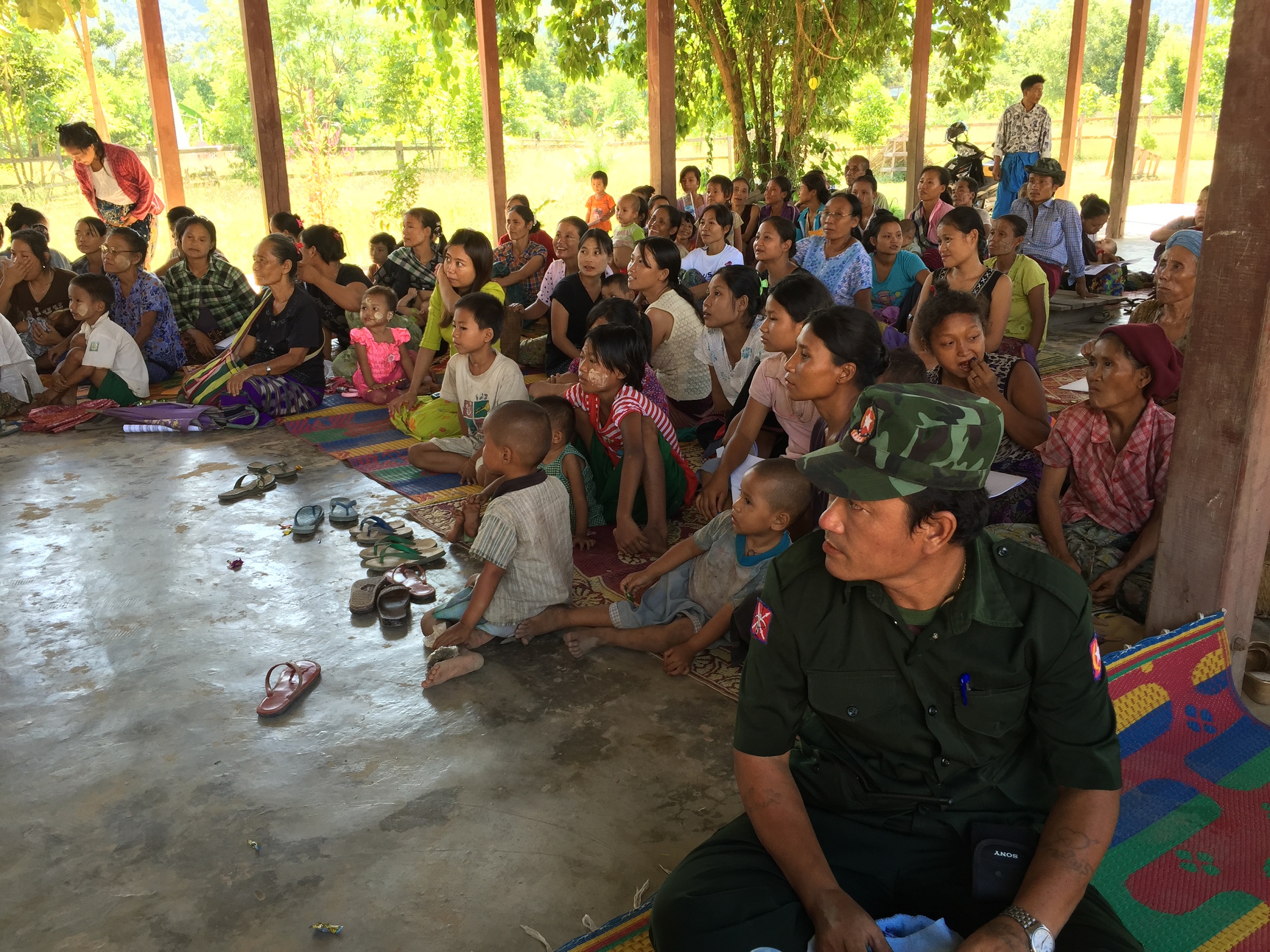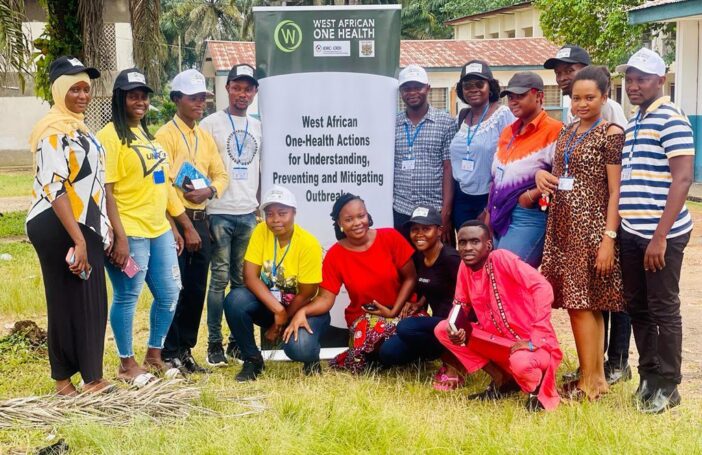An integrated approach for conflict-affected areas
Part one of this series outlined the operating environment of Kayah State. Today’s post will address appropriate program approaches and meaningful adaption within this context.
What the concept of integrated development means in conflict-affected areas has been little considered. However, in conflict-affected or remote areas integration can be a very appropriate approach. A characteristic of all conflict-affected contexts is the all-pervasive impact of conflict on all areas of life, especially if it has been chronic and long-lived, like in Kayah. However, given the enormous needs of such environments, what priorities and methodologies should be employed by the aid sector? Simply taking a sectoral approach means that whole swathes of needs may not be addressed and more importantly, if agencies take a uni-dimensional and technical approach, an opportunity to support the basic foundations for broader development may be missed. The absence of governance deserves particular attention. Often communities have suffered oppression, lack of justice and accountability from all conflict protagonists, and rarely experienced the positive traits of development and good governance: accountability, transparency, participation and inclusive decision-making. However, these aspects are the foundations of future social prosperity and maturity.
Pact has recognised that when working in conflict-affected areas it is critical to adopt a holistic approach that encompasses community cohesion, mutual support and empowerment. While implementing primarily the community health program aspects of the program, Shae Thot, Pact is approaching the objectives through an empowerment and community development process. This is trying to support the learning and practice of the key additional good governance attributes noted above. It is doing this through supporting the formation and training of a Village Development Committee (VDC), and the management and use of a Village Development Fund (VDF). These two mechanisms bring the community together to address the common issues of health provision but also reintroduce and model good governance behaviours that have been missing during the oscillating waves of violence and disempowerment suffered from the military and the EAGs.
Health outcomes are of utmost importance at the household and family level and create substantive ‘visible’ benefits, but the experience of Shae Thot suggests that the relearning and practice of good governance skills is also a critical part of wellbeing for the community. Good leadership is a quality to be prized anywhere, but in this context the cost of leadership (being targeted by conflict protagonists) and taking responsibility have been prohibitive given people’s experience. The pride when VDCs show outsiders the noticeboards of what they are doing, and the complaint mechanisms in action and how they respond to them is extraordinarily moving, as this region recovers from the simultaneous paradoxical emotional numbing and pain of long-term conflict. Healing of the community is a fundamental part of the broader healing of society as it tries to recover from conflict and move forward. Even if the worst case scenario happens and the current ceasefire breaks down, the community has had positive experiences and re-learned skills that may help it better conduct its own internal governance with integrity and dignity when under renewed duress. It remains to be seen whether communities that have gone through this positive governance experience are able to accept and respond to other development initiatives faster and with greater receptivity. However, some initial VDC engagements with a new government loan scheme have shown that it is likely that communities with these skills are better able to take advantage of new opportunities for the common good.
Whether considering development from the ‘resilience’ perspective or all programming in conflict-affected areas, agencies should consider more deliberately addressing the social dimensions of their sectoral work. They help ‘re-normalise’ community interactions and good governance processes. This helps to redress destructive conflict experiences by giving back maximum transparent and accountable decision-making, imparting self-confidence and the participation of all stakeholders.
Beyond conflict sensitivity – what adaptation to context really means
Once the program approach is established, it needs to be appropriately adapted. As highlighted so far in this series, acknowledging the past and the specific context achieves more effective programming. Pact’s starting point for Shae Thot was a thorough context analysis. This involved a two-step process: first, a broader understanding of the context, evolution and history of the conflict and political issues affecting Kayah; and second, a deeper process creating village and community profiles to inform program adaptation. The second phase was not originally anticipated but emerged from three key findings. First, each community’s experience of conflict is variable and unique in nature – in other words, the nature of the ‘topography of violence.’ Second, the society is fractured as a result of the continuous movement, breaking, dispersing and then reforming of villages. Finally, there are deep divides and a lack of trust in communities resulting from the experience of the ‘four cuts’, abuse from all sides, a lack of justice, and the nature of the political divides and fighting between different EAGs, which even reach within families. Therefore, it was realised that a more detailed response was needed to ensure conflict sensitivity and that these varied issues were addressed proactively.
The purpose of the community profiles is to provide the foundation from which to adapt the program, the assumption being that there may need to be different approaches for different types of category in such a varied conflict-affected environment. For instance, differing approaches may be relevant in villages that have experienced little or no conflict, those that may have had some experience and those that have been deeply affected by conflict. The profiles have resulted in three different models. In fact, it was found that the most important aspects determining approaches to implementation are the extent to which villages have the following characteristics:
- Model 1 villages have the time, interest (as a factor of trust, education and need) and ability to work through the original comprehensive version.
- Model 2 villages are more remote, have particular linguistic challenges and less time and interest (as a factor of trust, education and need) to commit to community workshops.
- Model 3 operates as a specific program of training and support to the health administration of one of the EAGs and thus is operating in hard-to-reach EAG-controlled areas.
It is interesting to note that despite the deep and diverse experience of conflict across Kayah, there are more important aspects of difference between villages than simply this experience. These aspects of difference include more practical considerations such as remoteness, proximity to urban centres, diversity of the community and associated characteristics such as language, exposure to education and relative need in terms of livelihood issues. While there is a degree of relationship between these characteristics and conflict, it is often secondary. It therefore becomes as imperative to adapt programming to the practical differences among villages as much as to the explicit conflict dynamics. Changes made to the original process and program module were to supplement village fund matching grants to a greater extent than other villages due to poverty levels, and employ the greater use of interactive media in local languages. In addition, to respond to the low levels of education and literacy, self-learning materials were simplified and include more illustrations to convey concepts. Videos have been popular with the community as they helped produce them and so identify with them. They can also use videos by themselves when it suits them, providing a sense of ownership and empowerment, as well a chance to reflect on the issues, seeing them as part of their daily life rather than outsiders’ problems. Where communities have less time (perhaps as a factor of education and trust) to commit to the program, materials are shortened and condensed to ensure that the most relevant are conveyed and villages do not miss out on the most critical lessons and program materials. However, the time and investment committed by staff in Model 2 villages has been even more than in others in order to increase exposure and the number of informal meetings conducted to help build trust with the village. Repetition of key content also helps to cement understanding and familiarity of information.
Clearly adaptation of program content and approach is important. Models cannot be a ‘one size fits all’ to be successful, and the usual approach is more likely to fail in achieving its objectives in contexts where variance from perceived program ‘participant norms’ is greater. The question it raises is the extent of assumptions made about the homogeneity of the villages in which programs work. All models assume the majority of communities are the same, so you can apply the same approach and content successfully. While adapting models is a rational approach to a more complex reality, it remains to be seen whether it actually achieves greater success in achieving project objectives across communities or within communities. How to measure this well needs to be thought through more deeply. Meanwhile, the realisation that in conflict-affected areas process, participation, and inclusivity for their own sake may be more important than program objectives is a recurring reflection in this series. The final post in this series will focus on this in relation to the specific challenges of staffing and measurement.
Simon Richards is an independent consultant with over 20 years of experience working on a range of development and humanitarian programs. He is a specialist in conflict management and peacebuilding. He undertook the research for this three part series in close collaboration with staff of Pact Myanmar. The series explores the prevailing conditions and context in Kayah State, Myanmar and the rationale, learning and reflections emerging from Pact Myanmar’s implementation of an integrated development program, Shae Thot (the way forward in Myanmar), trying to address them. The contents of this blog series are the responsibility of the author and do not necessarily reflect the views of USAID or the United States Government.





